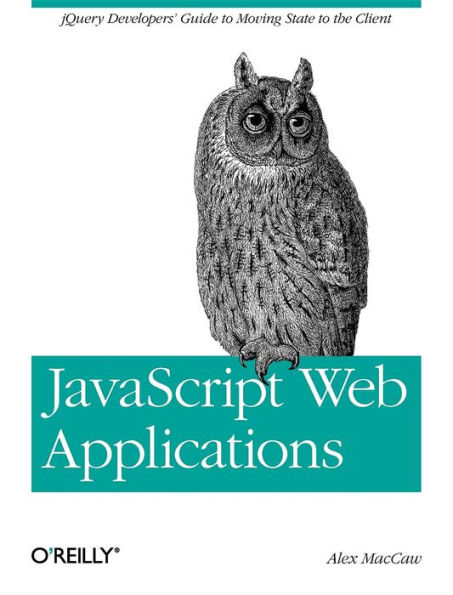Building rich JavaScript applications that bring a desktop experience to the Web requires moving state from the server to the client side—not a simple task. This hands-on book takes proficient JavaScript developers through all the steps necessary to create state-of-the-art applications, including structure, templating, frameworks, communicating with the server, and many other issues.
Throughout the book, you'll work with real-world example applications to help you grasp the concepts involved. Learn how to create JavaScript applications that offer a more responsive and improved experience.
- Use the Model-View-Controller (MVC) pattern, and learn how to manage dependencies inside your application
- Get an introduction to templating and data binding
- Learn about loading remote data, Ajax, and cross-domain requests
- Create realtime applications with WebSockets and Node.js
- Accept dropped files and upload data with progress indicators
- Use major frameworks and libraries, including jQuery, Spine, and Backbone
- Write tests and use the console to debug your applications
- Get deployment best practices, such as caching and minification
Building rich JavaScript applications that bring a desktop experience to the Web requires moving state from the server to the client side—not a simple task. This hands-on book takes proficient JavaScript developers through all the steps necessary to create state-of-the-art applications, including structure, templating, frameworks, communicating with the server, and many other issues.
Throughout the book, you'll work with real-world example applications to help you grasp the concepts involved. Learn how to create JavaScript applications that offer a more responsive and improved experience.
- Use the Model-View-Controller (MVC) pattern, and learn how to manage dependencies inside your application
- Get an introduction to templating and data binding
- Learn about loading remote data, Ajax, and cross-domain requests
- Create realtime applications with WebSockets and Node.js
- Accept dropped files and upload data with progress indicators
- Use major frameworks and libraries, including jQuery, Spine, and Backbone
- Write tests and use the console to debug your applications
- Get deployment best practices, such as caching and minification

JavaScript Web Applications: jQuery Developers' Guide to Moving State to the Client
278
JavaScript Web Applications: jQuery Developers' Guide to Moving State to the Client
278Related collections and offers

Product Details
| ISBN-13: | 9781449315283 |
|---|---|
| Publisher: | O'Reilly Media, Incorporated |
| Publication date: | 08/11/2011 |
| Sold by: | Barnes & Noble |
| Format: | eBook |
| Pages: | 278 |
| File size: | 3 MB |
